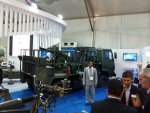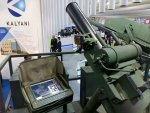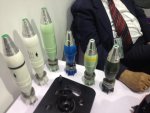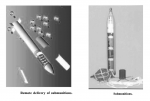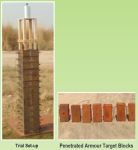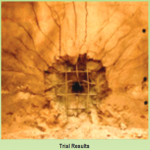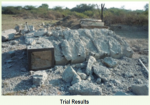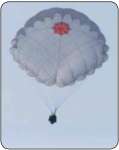Two very significant pitches for indigenously developed arms came from the highest levels of the Indian Army in the past week. Addressing a DRDO conference on October 15, army chief Gen. Bipin Rawat said the forces would fight and win the next war with homegrown solutions. Addressing the annual Defence Attaches' conclave four days later, Vice-Chief of Army Staff Gen. M.M. Naravane said that the army would accept indigenous technology even if they didn't meet the 'best' parameters. Improvements, he said, could be made later. In any other country, army officials endorsing home-grown technology would not have been a non-sequitur. But in the Indian context, these major endorsements signal a welcome shift in the thought process.
Indian industry officials say the army has been the slowest of the three services to embrace indigenous technology. This could also be explained by the fact that it is the least technology-intensive of the three services. The army is manpower intensive. It does not operate hundreds of fighter aircraft over vast airspaces nor does it have platforms as technologically intensive as an aircraft carrier or a nuclear-powered submarine. Army testing procedures are rigorous and trials of critically required equipment like bulletproof jackets often go on for years without achieving results. The navy has worked closely with the DRDO to perfect indigenous sonars. The army can only claim a handful of successful collaborations such as the Dhanush which fielded an indigenous 155 mm howitzer from blueprints supplied by Bofors in the 1980s. Three critical systems-the Tactical Communications System (TCS), Battlefield Management Systems (BMS) and the Future Infantry Combat Vehicle (FICV) have been on for over a decade without a prototype in sight.
But right now, the 1.3 million-man Indian army, the world's second largest, is looking at a budgetary wall. The army accounts for over half the total defence budget but spends 80 per cent of its share on salaries and running costs. Defence budgets are unlikely to rise for it to be able to fill all its equipment voids. The indigenisation route may be the only way around this.
In recent years, the army has embarked on what could only be called Quixotic pursuits. A bizarre contest to buy a multi-caliber rifle-a single rifle firing two different types of ammunition-was scrapped after seven long years. Last year, it shut down a BMS project that would seamlessly link all its fighting formations, citing high project costs.
Yet, nothing compares in the scale of neglect to the army's now-shelved Beta battle computer project. The Kargil War of 1999 exposed how little the infantryman's kit had changed since the 1971 war. Project Beta, flagged off in 2003, then, seemed astonishingly ahead of its time by army standards.
Among the early projects initiated by the Army Technology Board, the aim was for every soldier to field a hand-held computer. It was the army's leap into the digital battlefield of the future, bringing the Indian soldier on par with counterparts in the US and Israel who were racing to develop the same capability.
Project Beta's hand-held or body-worn PDA would enhance a soldier's situational awareness in the battlefield by answering three basic questions: where am I, where is the enemy, and where are my comrades?
The answers would blip on the screen of a hand-held device, rugged-proofed for military use. The device was meant to equip infantry companies (100 or more soldiers) engaged in counter-insurgency in Jammu and Kashmir.
The project combined the expertise of Bengaluru's IT industry with academia, defence scientists along with end-users. Bengaluru-based Encore software collaborated with the Indian Institute of Science (IISc) and the DRDO. The Indian Army's Directorate General of Information Systems worked as co-developers and end-users on the project. "It was a unique partnership and it would have been a fantastic base for us to build on for the army's future projects," says Colonel D.P.K. Pillay (retired) who coordinated Project Beta at Army HQ, New Delhi.
By 2005, the team had produced an integrated battlefield computer that would allow a soldier to pinpoint his exact location on a Geographical Information System (GIS) powered map, allow friendly troops to see his position on their screens and allow communication between them. The Situational Awareness and Tactical Handheld Interface (SATHI) packed a lot into an 875-gram rugged set that was smaller than a brick. The solar-powered PDA ran on a 128-bit encrypted system, a Linux programme and was capable of withstanding temperatures between -20 degrees C to + 70 C. It had a 5 km range and a GPS receiver-with a 24 hour battery life. It supported both voice and text for devices deployed in the mission area. Its software-controlled radio allowed regular updates of device positions, messages and map markings over the entire network, directly, or by relay. The password-protected device, its manufacturers say, could even act as a decoy if it fell into enemy hands. If unauthorised attempts were made to log in, the unit could actually reveal the position of the person attempting the break-in to friendly troops.

A prototype of the indigenously developed hand-held computer 'Sathi' shelved by the army in 2008.
When the first 120 units were tested, it was a formidable game-changer. Infantry closing in on the enemy knew their location and those of friendly forces in real time. Troop movements could be monitored by commanders on a laptop several kilometres away. Each Sathi unit theoretically had unlimited range because each unit acted as a relay station, bouncing signals to the next unit and thus doing away with the need to erect signal relay stations to boost range. The system was successfully demonstrated to President A.P.J Abdul Kalam. The developers drew up plans for a series of devices using the same core and operating systems which could scale up the Sathi's capabilities and be used by decision-makers up the command chain.
In 2008, a proposal for a second batch of 1,300 Beta-2 devices came up before the Army Technology Board for funding approval. The project team wanted to test it across a wider area. That's when the army pulled the plug on the project. The decision took the project team by surprise. It was almost inexplicable, says one officer who worked on the project. "We don't need to reinvent the wheel," a three-star officer who headed the army's Information Systems (IS), reportedly told the project team when they protested. Project Beta was closed down. The Sathis already manufactured were consigned to the almirahs in the office of the D-G, IS. It was a move that would have delighted the dozens of foreign equipment manufacturers who are now offering their own solutions to the Indian Army.
Cut to 2019. The army still does not have a hand-held computer. Special forces operatives crawling up on the enemy at the Line of Control have no way of knowing where their comrades are at. Infantrymen engaged in combing operations operate just as they would do several years ago--through radio, mobile phone or hand signals. The Sathi project remains a wistful reminder of what might have been.
Could the project be revived? Quite easily, says Colonel K.P.M. Das (retired) who worked on the project and is now with Cisco Systems. "The technology has gone through four or five cycles since then, with the result that today's start point can be achieved in a matter of months. A Sathi for 2020 can do a hundred times more than what it did 15 years ago and a large number of military-grade systems can be fielded in a year." A resurrected Sathi could well be the biggest statement of the army's indigenisation intent.
@Falcon @randomradio @Milspec @Parthu
Why the army's changed mindset on indigenous technology is a relief
Indian industry officials say the army has been the slowest of the three services to embrace indigenous technology. This could also be explained by the fact that it is the least technology-intensive of the three services. The army is manpower intensive. It does not operate hundreds of fighter aircraft over vast airspaces nor does it have platforms as technologically intensive as an aircraft carrier or a nuclear-powered submarine. Army testing procedures are rigorous and trials of critically required equipment like bulletproof jackets often go on for years without achieving results. The navy has worked closely with the DRDO to perfect indigenous sonars. The army can only claim a handful of successful collaborations such as the Dhanush which fielded an indigenous 155 mm howitzer from blueprints supplied by Bofors in the 1980s. Three critical systems-the Tactical Communications System (TCS), Battlefield Management Systems (BMS) and the Future Infantry Combat Vehicle (FICV) have been on for over a decade without a prototype in sight.
But right now, the 1.3 million-man Indian army, the world's second largest, is looking at a budgetary wall. The army accounts for over half the total defence budget but spends 80 per cent of its share on salaries and running costs. Defence budgets are unlikely to rise for it to be able to fill all its equipment voids. The indigenisation route may be the only way around this.
In recent years, the army has embarked on what could only be called Quixotic pursuits. A bizarre contest to buy a multi-caliber rifle-a single rifle firing two different types of ammunition-was scrapped after seven long years. Last year, it shut down a BMS project that would seamlessly link all its fighting formations, citing high project costs.
Yet, nothing compares in the scale of neglect to the army's now-shelved Beta battle computer project. The Kargil War of 1999 exposed how little the infantryman's kit had changed since the 1971 war. Project Beta, flagged off in 2003, then, seemed astonishingly ahead of its time by army standards.
Among the early projects initiated by the Army Technology Board, the aim was for every soldier to field a hand-held computer. It was the army's leap into the digital battlefield of the future, bringing the Indian soldier on par with counterparts in the US and Israel who were racing to develop the same capability.
Project Beta's hand-held or body-worn PDA would enhance a soldier's situational awareness in the battlefield by answering three basic questions: where am I, where is the enemy, and where are my comrades?
The answers would blip on the screen of a hand-held device, rugged-proofed for military use. The device was meant to equip infantry companies (100 or more soldiers) engaged in counter-insurgency in Jammu and Kashmir.
The project combined the expertise of Bengaluru's IT industry with academia, defence scientists along with end-users. Bengaluru-based Encore software collaborated with the Indian Institute of Science (IISc) and the DRDO. The Indian Army's Directorate General of Information Systems worked as co-developers and end-users on the project. "It was a unique partnership and it would have been a fantastic base for us to build on for the army's future projects," says Colonel D.P.K. Pillay (retired) who coordinated Project Beta at Army HQ, New Delhi.
By 2005, the team had produced an integrated battlefield computer that would allow a soldier to pinpoint his exact location on a Geographical Information System (GIS) powered map, allow friendly troops to see his position on their screens and allow communication between them. The Situational Awareness and Tactical Handheld Interface (SATHI) packed a lot into an 875-gram rugged set that was smaller than a brick. The solar-powered PDA ran on a 128-bit encrypted system, a Linux programme and was capable of withstanding temperatures between -20 degrees C to + 70 C. It had a 5 km range and a GPS receiver-with a 24 hour battery life. It supported both voice and text for devices deployed in the mission area. Its software-controlled radio allowed regular updates of device positions, messages and map markings over the entire network, directly, or by relay. The password-protected device, its manufacturers say, could even act as a decoy if it fell into enemy hands. If unauthorised attempts were made to log in, the unit could actually reveal the position of the person attempting the break-in to friendly troops.
A prototype of the indigenously developed hand-held computer 'Sathi' shelved by the army in 2008.
When the first 120 units were tested, it was a formidable game-changer. Infantry closing in on the enemy knew their location and those of friendly forces in real time. Troop movements could be monitored by commanders on a laptop several kilometres away. Each Sathi unit theoretically had unlimited range because each unit acted as a relay station, bouncing signals to the next unit and thus doing away with the need to erect signal relay stations to boost range. The system was successfully demonstrated to President A.P.J Abdul Kalam. The developers drew up plans for a series of devices using the same core and operating systems which could scale up the Sathi's capabilities and be used by decision-makers up the command chain.
In 2008, a proposal for a second batch of 1,300 Beta-2 devices came up before the Army Technology Board for funding approval. The project team wanted to test it across a wider area. That's when the army pulled the plug on the project. The decision took the project team by surprise. It was almost inexplicable, says one officer who worked on the project. "We don't need to reinvent the wheel," a three-star officer who headed the army's Information Systems (IS), reportedly told the project team when they protested. Project Beta was closed down. The Sathis already manufactured were consigned to the almirahs in the office of the D-G, IS. It was a move that would have delighted the dozens of foreign equipment manufacturers who are now offering their own solutions to the Indian Army.
Cut to 2019. The army still does not have a hand-held computer. Special forces operatives crawling up on the enemy at the Line of Control have no way of knowing where their comrades are at. Infantrymen engaged in combing operations operate just as they would do several years ago--through radio, mobile phone or hand signals. The Sathi project remains a wistful reminder of what might have been.
Could the project be revived? Quite easily, says Colonel K.P.M. Das (retired) who worked on the project and is now with Cisco Systems. "The technology has gone through four or five cycles since then, with the result that today's start point can be achieved in a matter of months. A Sathi for 2020 can do a hundred times more than what it did 15 years ago and a large number of military-grade systems can be fielded in a year." A resurrected Sathi could well be the biggest statement of the army's indigenisation intent.
@Falcon @randomradio @Milspec @Parthu
Why the army's changed mindset on indigenous technology is a relief



